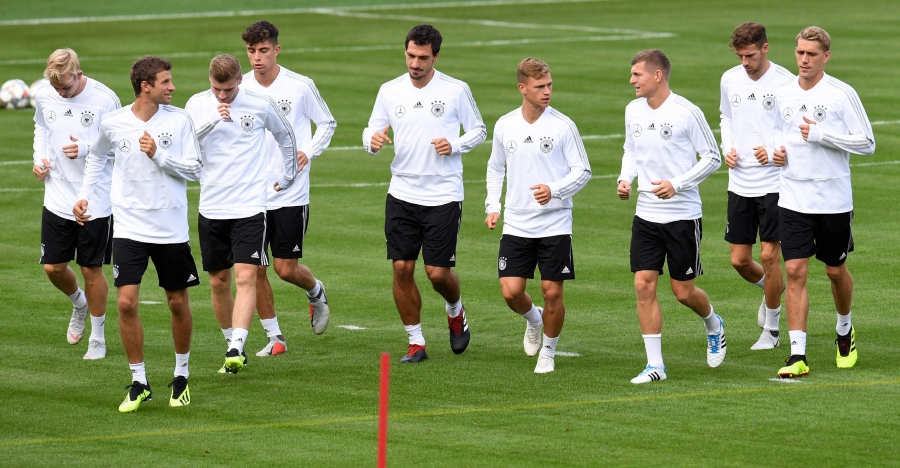
PARIS: A heavyweight showdown in Munich between the last two World Cup winners, France and Germany, sets the ball rolling on Thursday as the inaugural UEFA Nations League gets under way.
The new tournament sees the 55 European national teams split into four divisions, taking promotion and relegation to international football while also offering an alternative route to the 2020 European Championship, without replacing the qualifiers themselves.
AFP Sport tells you everything you need to know about the competition:
• The creation of the competition stems from the desire to replace meaningless friendly matches with more competitive games.
When Germany last hosted France, in a friendly last November, the number of empty seats in Cologne was striking and suggested that the appetite for such games was waning.
Meanwhile, smaller nations find it difficult to arrange friendly games, so UEFA believe they have come up with the perfect solution.
They are using their own coefficient to split their 55 member nations into four leagues, with the top 12 sides all in League A. The next 12 are in League B, followed by 15 in League C and the bottom 16 in League D.
Each group contains three or four teams, with everyone playing each other home and away between September and November this year.
• The winners of the four groups in League A will go through to the finals from June 5-9 next year. Semi-finals, a third-place play-off and a final will all be played, with the host country to be decided in December from among the finalist teams.
So there is a title and a trophy up for grabs, but also promotion and relegation with future Nations Leagues in mind.
The team finishing bottom of each group in Leagues A, B and C will be relegated, and replaced by those finishing top of the groups in Leagues B, C and D.
• There will still be qualifiers for the 24-team Euro 2020. They will take place from March to November, 2019, with a draw to be held this coming December.
However, that will no longer be the only means of qualifying for that competition.
Twenty teams will make it to Euro 2020 from qualifying, with the top two in each of the 10 groups advancing. The remaining four places will be decided in March 2020, in the Nations League play-offs.
Each of the four leagues (A, B, C and D) will hold play-offs which will take place in March 2020 and which will be contested by the respective group winners, with semi-finals and a final being played.
However, if a group winner has already qualified via the classic route, then their spot will go to the next best-ranked team in their league. And if a league does not have four teams to compete, the remaining slots are allocated to teams from another league.
All of which means that one place at Euro 2020 will go to a team from League D, comprised of the continent’s traditional minnows.
Meanwhile, teams will still be free to play friendly matches when the opportunity arises, hence why Scotland and Belgium meet in Glasgow this Friday, for example.
League A
Group 1: Germany, France, Netherlands
Group 2: Belgium, Iceland, Switzerland
Group 3: Italy, Poland, Portugal
Group 4: Croatia, England, Spain
League B
Group 1: Czech Republic, Slovakia, Ukraine
Group 2: Russia, Sweden, Turkey
Group 3: Austria, Bosnia and Herzegovina, Northern Ireland
Group 4: Denmark, Republic of Ireland, Wales
League C
Group 1: Albania, Israel, Scotland
Group 2: Estonia, Finland, Greece, Hungary
Group 3: Bulgaria, Cyprus, Norway, Slovenia
Group 4: Lithuania, Montenegro, Romania, Serbia
League D
Group 1: Andorra, Georgia, Kazakhstan, Latvia
Group 2: Belarus, Luxembourg, Moldova, San Marino
Group 3: Azerbaijan, Faroe Islands, Kosovo, Malta
Group 4: Armenia, Macedonia, Gibraltar, Liechtenstein.--AFP